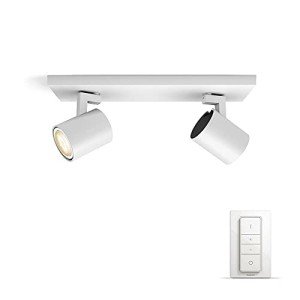How Interior Lighting UK Has Changed The History Of Interior Lighting UK
Interior Lighting in the UK: A Comprehensive Guide
Interior lighting plays an essential role in creating an environment, enhancing performance, and revealing personal design within homes and companies. In the UK, where the weather can be unforeseeable, reliable lighting is not only about aesthetics however also about making spaces feel warm, welcoming, and useful. This short article delves into various aspects of interior lighting, encompassing types, trends, suggestions, and regularly asked questions.
Comprehending the Importance of Interior Lighting
Lighting is typically considered the foundation of interior style. Buy Bathroom Lighting UK affects mood, performance, and the perceived size of spaces. The best lighting can:
- Enhance the architectural functions of a room.
- Emphasize artwork and decoration.
- Improve safety and security.
- Influence efficiency in work spaces.
- Produce a comfy ambiance for relaxation.
Kinds Of Interior Lighting
Reliable lighting design usually integrates 3 main kinds of lighting: ambient, task, and accent.
1. Ambient Lighting
This is the primary source of light in a room, providing overall illumination. Typical sources consist of:
- Ceiling-mounted fixtures
- Chandeliers
- Recessed lighting
- Soft wall sconces
Ambient lighting develops a structure from which other lighting types can build on.
2. Task Lighting
Task lighting focuses on specific areas to facilitate activities such as reading, cooking, or working. This type of lighting helps to minimize eye pressure and can significantly affect performance. Typical sources consist of:
- Desk lamps
- Under-cabinet lights in kitchen areas
- Checking out lamps beside beds
- Mounted lights aimed at work surface areas
3. Accent Lighting
Accent lighting adds drama and highlights particular objects or areas, such as artwork or architectural features. This type of lighting can produce visual interest and depth in an area. Sources consist of:
- Picture lights
- Decorative lamps
- Uplighters
- LED strip lights along racks
Using a combination of these lighting types can result in a well-balanced and multifunctional space.
Popular Lighting Trends in the UK
The interior lighting landscape in the UK continues to evolve, influenced by design patterns, innovation, and consumer choices. Here are some popular trends to enjoy:
Smart Lighting: The arrival of smart technology has changed how individuals manage lighting in their homes. Smart bulbs and systems like Philips Hue enable users to manage brightness and color temperature via their smartphones.
Minimalist Designs: Sleek, simple styles that mix seamlessly with interiors are controling the marketplace. Pendant lights with delicate frames, LED strips, and geometric shapes are especially fashionable.
Industrial Lighting: This pattern showcases raw, disclosed materials. Metal fixtures and Edison bulbs use a vintage touch that is both trendy and practical.
Eco-Friendly Options: With increasing awareness of sustainability, many consumers are turning to energy-efficient LED alternatives and fixtures made from sustainable products.
Tips for Effective Interior Lighting Design
Creating an effective lighting plan requires thoughtful consideration of various aspects. Here are some ideas:
Consider the Purpose of Each Room: Every area has a different function. Consider what activities will occur and what type of lighting will support those activities.
Layer Lighting: Employ several types of lighting within a room to create depth and flexibility. Combine ambient, job, and accent lighting to improve both aesthetics and performance.
Usage Dimmers: Dimmers enable control over brightness levels, allowing users to change lighting according to state of mind and time of day.
Integrate Natural Light: Make the most of natural lights like windows. Usage light, reflective colors for walls and home furnishings to make the most of brightness.
Consider Color Temperature: Different color temperature levels (determined in Kelvins) develop various environments. Warmer temperature levels (around 2700K-3000K) are relaxing, while cooler temperature levels (4000K+) provide a more clinical or energetic feel.
Interior Lighting Mistakes to Avoid
To produce a well-lit space, it's vital to prevent common lighting pitfalls. Here are some mistakes to expect:
Underestimating Wattage: Insufficient wattage can cause dim, unwelcoming areas.
Ignoring Scale: Fixtures that are too small for a room can watch out of place, while large fixtures can overwhelm a space.
Over-reliance on Ceiling Lights: Relying exclusively on overhead lighting can develop uninviting shadows; balance with extra lighting types.
Poor Placement: Misplaced lights can develop areas that are too bright or too dark. Plan placements attentively.
Frequently asked question Section
1. What is the difference in between warm white and cool white light?
Warm white light (2700K to 3000K) develops a cozy, inviting environment, best for living spaces and bedrooms, while cool white light (4000K to 5000K) is more matched for workspaces as it improves concentration and clarity.
2. How can I optimize natural light in my home?
To maximize natural light, use light-colored walls, strategically place mirrors to show light, and go with sheer window coverings that allow sunshine to travel through.
3. How do I pick the right light fixtures?
Think about the size of your space, the design of your decor, and the function of the area. Guarantee the scale of fixtures matches the room and matches the total aesthetic.
4. Are LED lights better than traditional bulbs?
Yes, LED lights are more energy-efficient, have a longer life expectancy, and can supply a variety of color temperature levels, making them a more sustainable lighting alternative.
5. What should I do if particular areas of my room remain too dark?
Consider including extra job or accent lighting to lighten up those locations. Floor lamps, wall sconces, and even strategically positioned table lamps can help relieve dark areas.
Interior lighting is an important element of home and business design throughout the UK. Understanding the various types, existing patterns, and best practices can help homeowner in producing spaces that are not just trendy however likewise practical. With thoughtful consideration and planning, effective lighting can transform any environment, improving both atmosphere and functionality for years to come.
